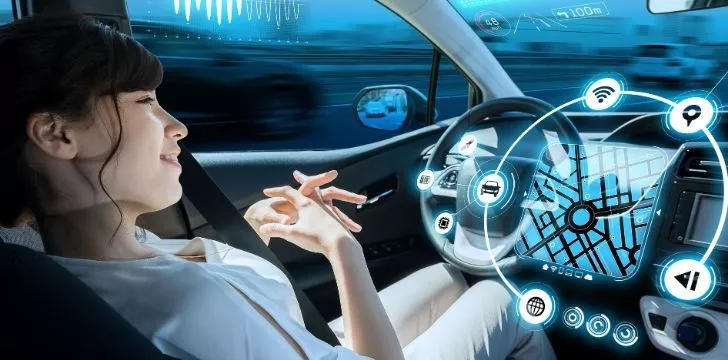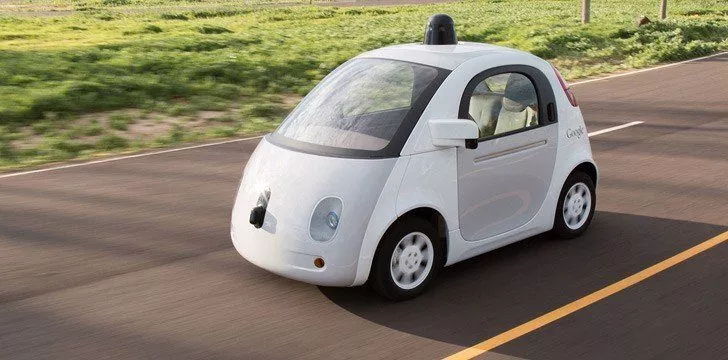Driverless cars come in two categories; autonomous and automated. The difference lies in its ability to be controlled by something or whether it has self-governance.
Driverless cars really do belong in what I imagine as the world of the future, alongside robot butlers and a Windows Operating System that doesn’t crash.
However, it seems Driverless or autonomous cars aren’t actually that far off, with some companies even releasing fully functioning, semi-autonomous cars.
Now, this does excite me; who doesn’t love the idea of jumping in your car and sitting back as it travels you across the country to wherever you’re heading? But how far away are we actually from the dream?
What steps have we already reached, and what’s to come?
Well, that’s what we’re here to find out; below, you’ll see a timeline of these achievements.
Who are the pioneers?

First we have to look at the pioneers in this automotive field, pushing the boundaries, trying to reach an otherwise impossible dream.
The 1920s saw inventors take their first test run with the “linrrican Wonder”, debuted Houdina Radio Control, it was a radio-controlled driverless car and was shown traveling through a traffic jam in New York City.
The controlling came from a second car directly behind sending radio impulses which were received by an antenna and sent the signals to circuit-breakers that controlled small electric motors to direct the car’s movement.
As with all futuristic ideas, the time at which those in the past thought the technology would exist was way off, like Back To The Future’s predictions of hoverboards in 2015, Norman Bel Geddes in the 1930s thought the 1960s would be the era for the automated car, this was sadly not the case.
The 1950s saw some further testing and advancements in this field but the 1980s were the next significant era in reaching the dream of a driverless car.
In this year, Mercedes trailed a vision-guided robotic van on an open road which achieved a speed of 39 mph.
EUREKA also started the first real project aimed at creating autonomous vehicles from 1987 to 1995, it was called the Prometheus Project.
The ALV, or Autonomous Land Vehicle, project in America carried out the first example of a car following a road that used computer vision and autonomous robotic control, it reached up to 19 mph, using newly developed technology from numerous scientific powerhouses, including the University of Maryland.
In 1987 with the ALV, HRL Labs displayed the first off-road map and sensor-based autonomous navigation going 2,000+ feet at 1.9 mph on difficult terrain.
However 1989 saw the biggest development, Carnegie Mellon University displayed the use of neural networks to steer and control autonomous vehicles, this would form the building blocks of contemporary control plans.
1990’s developments.
Throughout the 1990s, as I was but a child, scientists were developing more and more vehicles and technologies to go further, faster, and more autonomously than ever before.
These included the Carnegie Mellon University’s Navlab project or “No Hands Across America” in 1995, which completed a 3,100 miles cross-country journey. This was actually semi-autonomous, though as the throttle and brakes were human-controlled for safety purposes.
The ARGO Project, which started in 1996, was a huge leap for the autonomous car journey; it used a modified Lancia Thema to follow a normal motorway’s lane markings.
It traveled 1,200 miles in Italy, averaging 56+ mph.
The vehicle had just two black-and-white low-cost cameras and used stereoscopic vision algorithms to learn its environment.
Modern-day achievements.

Post-2008 saw the next wave of major achievements.
In 2009 Ford brought the next gadget in the driverless car repertoire to their vehicles by producing those with a self-parking system as standard.
Since 2010 Google has been working on driverless cars but in 2012 their self-driving car transported its first user, a blind man, and say their self-driving car will be available to the public in less than 5 years.
By 2013 Google’s self-driving cars traveling over 500,000 miles. In this same year Nissan and Mercedes stated they will commercialize the driverless car by 2020.
Mercedes also debuted a vehicle driving 62 miles in numerous areas including cities, villages and motorways.
In late 2015, Tesla finally broke down the prototype/commercialized barrier with the Model S, unlike previous cars which were all either prototypes or unrealistic, the Tesla combined sleek looks with a smooth driverless system.
The vehicle needs you to keep your hands on the wheel ready to react to any problems it can’t handle and in turn is actually 92% driverless, for example it’s unable to stop at traffic lights.
The car with just 2 pulls of the cruise control will take over the vehicle and display its knowledge of the lane.
Tesla keeps control by using “Side Collision Avoidance”, “Auto Lane Changing” and like many other vehicles these days, automatic parallel parking.
Driverless cars and legislation.

A huge example of the significance and the realistic possibility of the driverless car would be the passing of legislation specifying and restricting these vehicles.
In 2000 Bill Clinton ordered selective availability turned off in the GPS, making civilian GPS more accurate.
In 2001 the US Congress tried to make 30% of combat vehicles autonomous by 2015.
In 2012 Nevada becomes the first US state to license self-driving cars and in 2013, NHTSA release a leveling system of 1, 2, 3 & 4, a naming convention for different categorization of autonomous cars.
The future of driverless cars.
What plans are there for the future? Well in Europe, The Royal Academy of Engineering has said by 2019 there will be unmanned autonomous vehicles traveling across Britain’s motorways through traffic, controlled by a network of laser-radar, sat-nav and cameras.
Tesla has said that their Model S isn’t their last endeavor into the world of autonomous vehicles and say in two years’ time they’ll have a 100% driverless car, a very big statement but it seems if anyone is capable, it’s Tesla.
So from the humble beginnings of the radio-controlled linrrican Wonder to the technical, self-aware and refined nature of the Tesla Model S, the driverless car is far from that of a distant dream.
The world of automotives and robotics are pairing up and displaying more and more impressive leaps in this area each and every year.
Plenty of newer vehicles having self-parking capabilities, cruise control and self-braking and with technology becoming exponentially more powerful it’s only a matter of time until we have a fully autonomous vehicle.


















